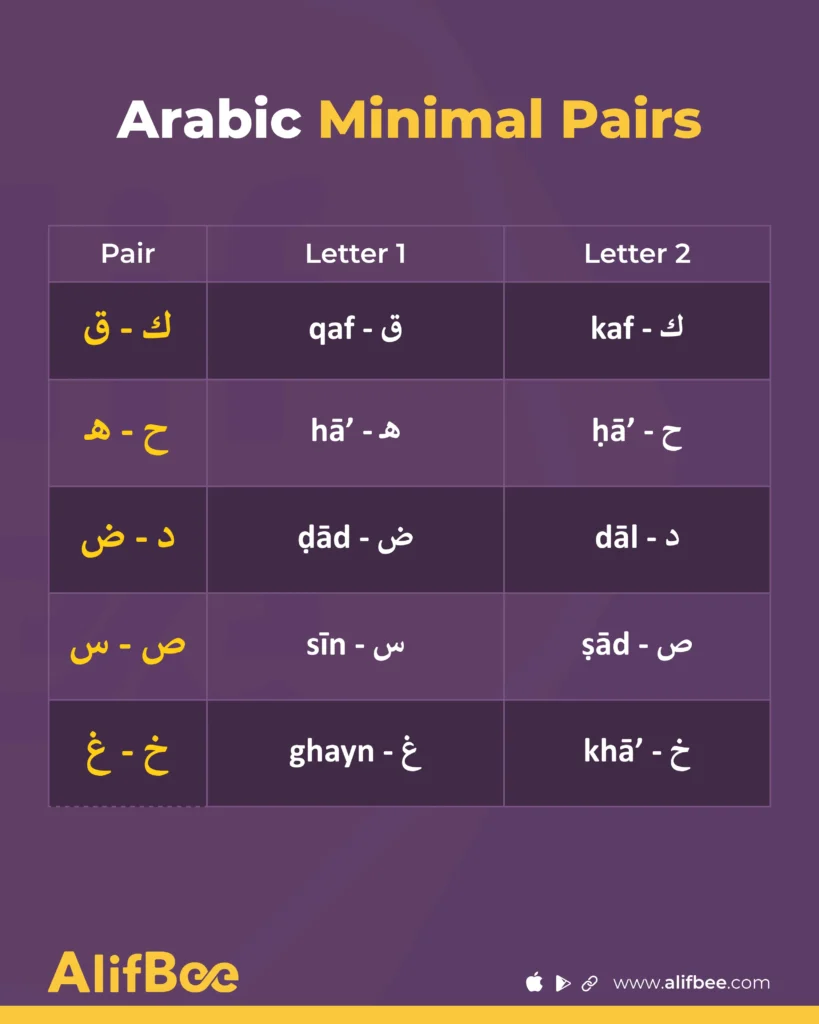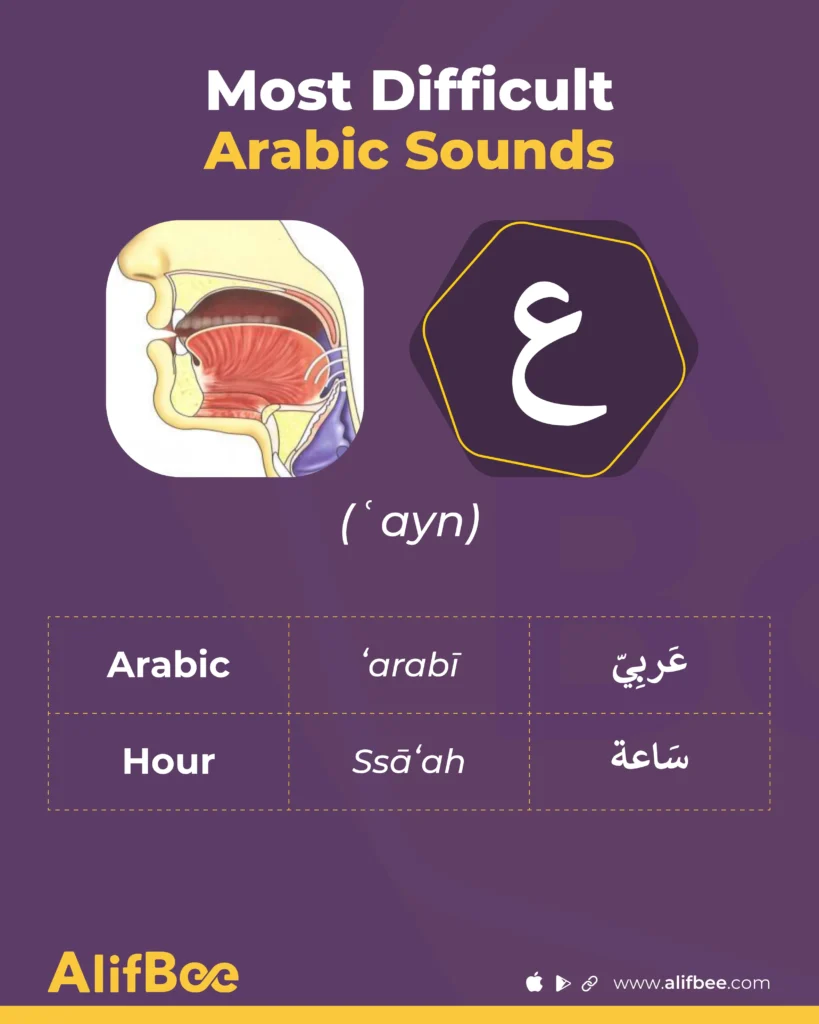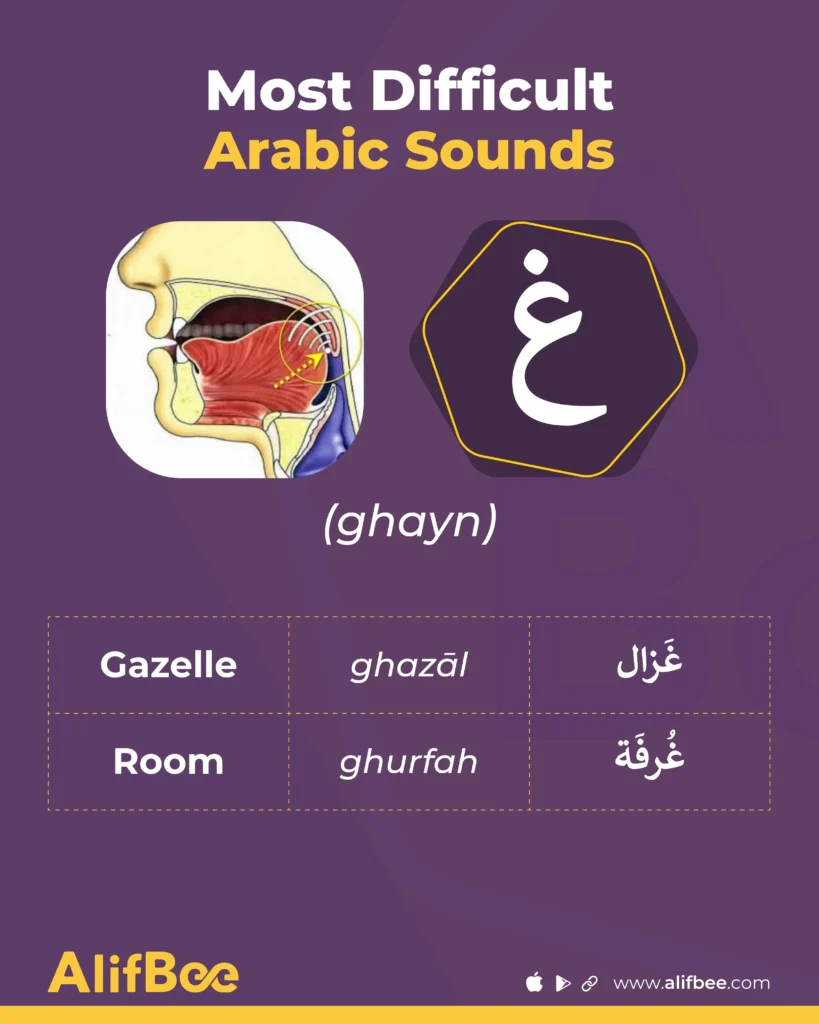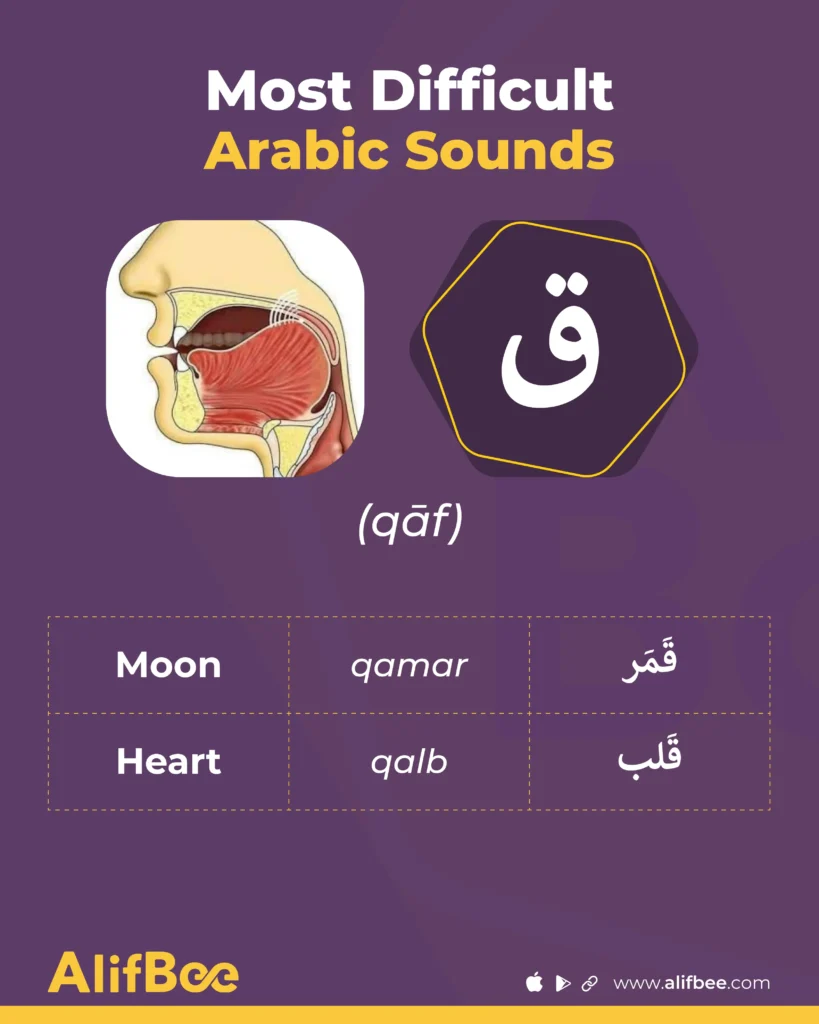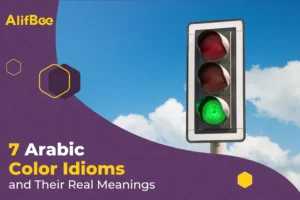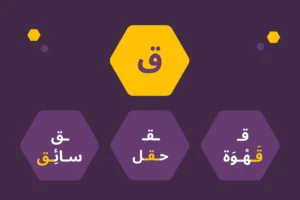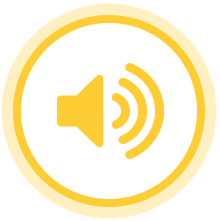
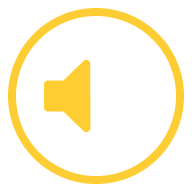 Listen to: Arabic Pronunciation Guide: 5 Tips for Clear Arabic Sounds
Listen to: Arabic Pronunciation Guide: 5 Tips for Clear Arabic Sounds

Why Mastering Arabic Pronunciation Matters for Fluent Speaking
Arabic sounds beautiful… but if you’re new to the language, it can also feel like your mouth suddenly has to learn a new set of gym exercises. Some letters flow easily, while others (like the infamous ‘Ayn) might make you wonder if you’re even doing them correctly.
If you’re learning Arabic and want to improve your pronunciation, you’re not alone. Every learner struggles with something: rolling the Rāʼ, shaping the Ḥāʼ, or getting that deep Ghayn without feeling like you’re coughing.
For example, with the letter Ḥā, which is a phonetic sound that can be challenging for beginners, native Arabic speakers have become used to hearing mispronounced Arabic versions of one of the most common romantic words: ḥabibi. It is either mispronounced as khabibi (with Khāʼ) or habibi (with Hāʼ), as in Hat.
But don’t make that affect your motivation or whatever got you here. The good news: you don’t have to dig deep into Arabic phonology to be able to overcome these challenges and to pronounce everyday Arabic words and sentences correctly. Nobody needs that – not even for Arabic!
This guide walks you through the most important Arabic pronunciation tips — simple, practical things you can try today. So by the end of the article, you will have everything you need to know about Arabic pronunciation and you will learn how to pronounce common Arabic words and phrases like a native speaker.
Ready? Let’s start by answering a very important question.
Why is it Hard to Pronounce Arabic Words?
Arabic is consistent in ways English simply isn’t. Every Arabic letter represents one sound, and that sound rarely changes. Once you master the core sounds, the entire language becomes clearer.
But the beginning can feel rough for a few reasons:
- Arabic has throat sounds that don’t exist in English, making it crucial to consult an Arabic pronunciation dictionary.
- Your ear isn’t trained yet to hear small differences (like Qāf vs Kaf). This is especially true in Modern Standard Arabic where differences are clearer than in the variations of Arabic dialects.
- Some letters require tongue positions you’ve never used before, which makes Arabic pronunciation physically challenging to the muscles in your mouth, especially for English speakers.
- English tends to blur consonants, while Arabic keeps its consonant sounds crisp. This means that to speak Arabic like a native, you need to do a lot of mouth gymnastics, more than you are used to.
Think of it like learning a new musical instrument: the first week feels noisy, awkward, even hopeless… and then suddenly something clicks, and the sound becomes familiar.
The 6 Most Difficult Arabic Sounds in the Arabic Alphabet
If you’ve ever tried mastering the Arabic Alphabet Pronunciation, you know that not all sounds are created equal. Some letters slip out easily and have similar or identical sounds to letters you have in your own language. Others make you pause, breathe, and question your choice to learn the Arabic language.
That’s completely normal when the goal is improving your Arabic pronunciation. In fact, every learner, including those who study Arabic pronunciation for reading the Quran, eventually meets the same group of “challenging but essential” Arabic letters.
Below is a friendly breakdown of the six Arabic sounds most learners find tricky. Understanding where each sound is produced is the secret to improving your overall Arabic pronunciation.
ع (ʿAyn)
ʿayn is a deep, voiced sound from the middle of the throat.
Not a cough. Not a growl. Think of it as a “squeezed vowel.” (Read the full blog on the letter ʿAyn)
Let’s look at two Arabic words that start with the letter ʿAyn. Listen carefully to the pronunciation.
Arabic
ʻArabī
عَربِيّ
hour
Sāʻah
سَاعة
غ (Ghayn)
If you speak French or know the French “r,” you’re halfway there.
It’s produced higher in the throat than ʿAyn and has a soft rasp to it. (Read the full blog on the letter Ghayn)
Check the following words that start with the letter Ghayn and listen carefully to the pronunciation. Make sure you repeat and model the pronunciation of the letter ghayn.
gazelle
Ghazāl
غَزال
room
Ghurfah
غُرفَة
ق (Qāf)
This is one of the defining sounds of Arabic. It comes from the very back of the mouth, and it’s sharper and deeper than Kaf, and it has a slight “pop” if done correctly. Many learners soften it too much or pronounce it as a regular K. (Read the full blog on the letter Qāf)
Study these common words that start with the letter Qāf and listen carefully to their pronunciation.
moon
Qamar
قَمَر
heart
Qalb
قَلب
ح (ḥāʼ)
This letter is like a whispery “h” with more air. No voice in the throat, only breath. This sound is not found in English and requires practice to produce correctly. Start with the same “haa” sound you make when you sigh and then constrict your throat to make it. (Read the full blog on the letter Ḥāʼ)
Check the following words that start with the letter Ḥāʼ and listen carefully to the pronunciation.
love
Ḥubb
حُبّ
milk
Ḥalyb
حَليب
خ (khāʼ)
khāʼ is the louder cousin of ḥāʼ and the rougher counterpart to Ghayn. You’ll hear it clearly in many Arabic words from Morocco to Iraq. The sound is not found in English but it resembles the German “ch” in Bach. (read the full blog on the letter Khāʼ)
Read the following words that start with the letter khāʼ and take a listen to how it is pronounced.
bread
Khubz
خُبز
brother
Akh
أَخ
ض (Ḍād) — “The Hardest Letter in Arabic”
Arabic is famously nicknamed “Loughat ad-ḍād” (The language of Ḍād) because no other language has exactly this sound.
It’s an emphatic “D” with your tongue pushed to the molars. (Read the full blog on the letter Ḍād)
Check the following words that start with the letter Ḍād and listen carefully to the pronunciation.
light
Ḍawʼ
ضَوء
earth
Arḍ
أَرض
How to Train Your Ear Before You Train Your Tongue
Here’s the truth: perfecting Arabic pronunciation starts with listening, not speaking.
Your brain needs exposure before your mouth can cooperate.
Here are simple listening habits that actually work:
1. Listen to short audio pronunciation clips repeatedly
Instead of listening to a 5-minute recording once, listen to a 5-second clip ten times to improve your Arabic pronunciation.
2. Use minimal pairs
These help your ear notice how similar sounding letters are pronounced differently:
Arabic Minimal Pairs
Pair
Letter 1
Transliteration
Letter 2
Transliteration
ك / ق
ك
kaf – k
ق
qaf – q
ح / هـ
ح
ḥāʼ – ḥ
هـ
hāʼ – h
د / ض
د
dāl – d
ض
ḍād – ḍ
غ / خ
غ
ghayn – gh
خ
khāʼ – kh
س / ص
س
sīn – s
ص
ṣād – ṣ
3. Compare recordings of yourself with native speakers
It’s uncomfortable at first but incredibly effective.
4. Listen while relaxing
Walking, cleaning, cooking.
Your brain absorbs language better when your body isn’t tense.
5 Arabic Pronunciation Tips You Can Use Today
These tips are simple, effective, and surprisingly fun.
1. Start with the isolated sound
Don’t jump into words immediately. Let’s focus on an example with the letter Qāf. You can do the same with other letters in the Arabic Alphabet.
moon
Qamar
قَمَر
قَ
Quran
Qurʼān
قُرْآن
قُ
necklace
Qilada
قِلادة
قِ
2. Exaggerate the sound first
Yes, go over the top. Make the sound too strong then gradually soften it to sound natural.
Works especially well for difficult Arabic letters: ʿAyn – Ghayn – Qāf – Ḍād
3. Feel the articulation point
A quick guide:
Articulation Point
Letters
Sounds
Back of the throat
ق، غ، خ
Khāʼ - Ghayn - Qāf
Middle throat
ع، ح
Ḥāʼ - ʿAyn
Tongue pressed upward
ص، ض، ط، ظ
Ẓāʼ - Ṭāʼ - Ḍād - Ṣād
Front of mouth
ف، ب، م
Mīm - Bāʼ - Fāʼ
When you know where a sound lives, you can reproduce it reliably.
4. Shadow native speakers
“Shadowing” means repeating immediately after someone speaks, matching tone, rhythm, and pace.
Use:
- Read Arabic children’s stories out loud (Check the AlifBee Reading Series on Kotobee and read how you can benefit from them)
- Short YouTube videos (check AlifBee’s YouTube videos)
- AlifBee audio lessons
- Podcasts: Practice slow speech mode (Check AlifBee’s Podcast)
- Use an Arabic Pronunciation Dictionary online to help you with words and phrases you are stuck with
5. Use Arabic Tongue-twisters: Sentences for Phonetic Practice
Tongue twisters are a fun and wildly effective method that challenges learners with tough sound combinations. They force your tongue and throat to coordinate.
You can read our full blog with 7 Fun Arabic Tongue Twister to Improve Your Pronunciation
Final word
Every learner struggles with something. Some get stuck on Ḥāʼ. Others spend weeks arguing with Ḍād. And some — yes, really — can’t tell Ghayn from Rāʼ for months. It’s all normal.
Arabic pronunciation isn’t about having a “perfect Arabic tongue.” It’s about slowly training your ear, your mouth, and your confidence.
One day, you’ll pronounce a word naturally and realize you don’t have to think about it anymore. That’s when Arabic starts to feel less like a subject… and more like a voice you can finally use.
If you want to practice these sounds with clear audio, gentle repetition, and a warm learning environment, try the AlifBee App – now with a free 14-day trial.
It gives you short pronunciation drills, mini-lessons with audio, and guided feedback.
FAQ: Arabic Pronunciation for Beginners
Start small. Listen to a short clip, copy it, and don’t rush the words.
Arabic is super consistent — one letter, one sound — so once you learn the basics, everything gets easier.
Because English doesn’t use the throat the way Arabic does.
New muscles + new airflow = a few funny mistakes at first. Totally normal.
Break the word into tiny pieces, say each part slowly, then blend them.
Example: قَ–ه–وَة → قهوة. ka-h-wa
They’re sounds made inside your throat — ع، ح، غ، خ، ه، ء — and yes, they feel weird at first. Give them time. They’re part of what makes Arabic sound so eloquent-sounding and unique.


